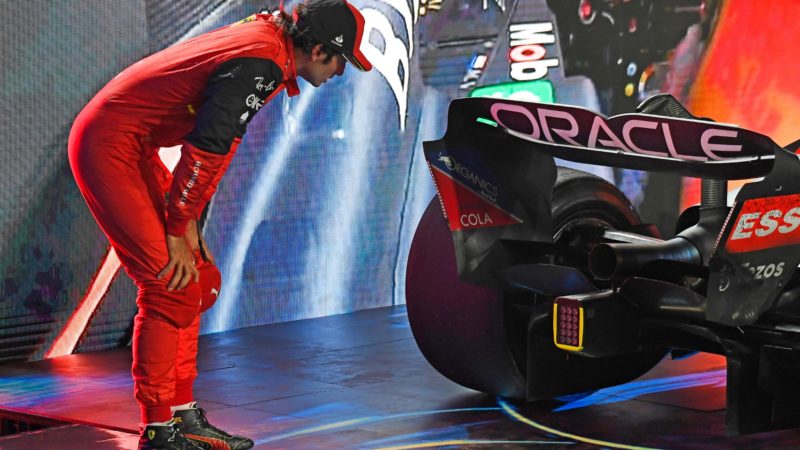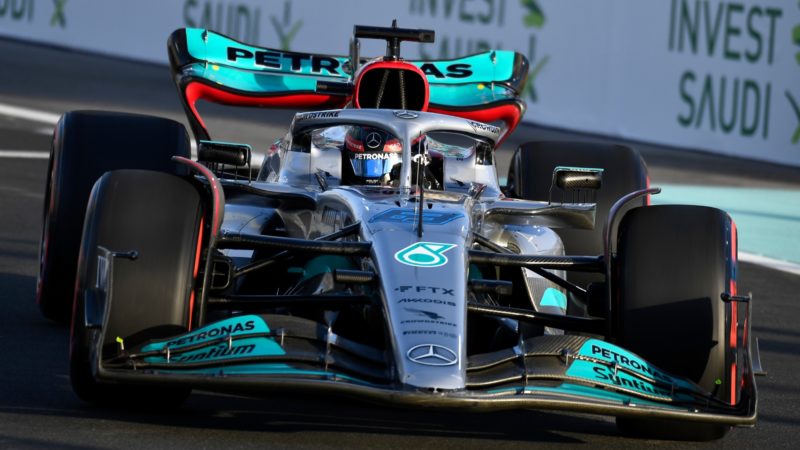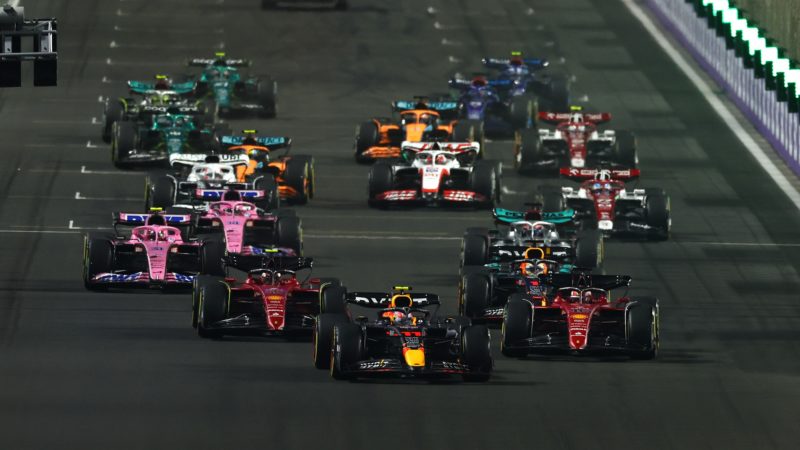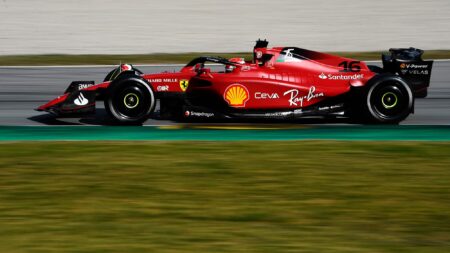The issue has come about due to the reliance on ground effect of the new 2022 cars. Venturi tunnels that run along the length of the floor underneath the car channel air from the leading edge of the floor by the sidepods to the rear diffuser.
The air is accelerated in narrowing sections of the tunnels, reducing the pressure underneath the car. Higher-pressure air above pushes it ever closer to the track surface until it stalls with a sudden loss of downforce.
This causes the car to immediately rise up, allowing the process to begin again as the ground effect brings the car back down once more.
So far in 2022, Mercedes has been the team most affected by the issue, with both George Russell and Lewis Hamilton still bouncing quite violently along the straights of Bahrain and Saudi Arabia as the team struggles to get on top of the problem.
Why is porpoising such a big problem?

Sainz gets a good look at the RB18 with Red Bull already on top of porpoising
Grand Prix Photo
For the development of the 2022 cars, engineers had not foreseen the issue of porpoising being a problem. This is partly due to the restrictions on the wind tunnel tests teams can conduct, chiefly the speeds allowed to be simulated. Porpoising occurs at higher speeds than those seen during wind tunnel development.
With the cars scraping along the floor at peak speeds, some speed will be scrubbed off but that isn’t the major issue the problem causes.
The cars are not built to repeatedly slam into the asphalt, and preseason testing saw several failures thought to be a result of this.
Even more seriously, the bouncing can be triggered in high-speed corners where a sudden loss of downforce, even for a split-second can end in disaster.
It is finding an ideal fix that makes the issue a tricky one to remedy. Teams are restricted on the number of hours of development time both in the wind tunnel and via CFD use, so creating and manufacturing new parts isn’t as simple as it once was now F1 is under a budget cap model.
Add to that the headache of finding a shorter-term fix while maintaining performance versus rivals and you have a situation in which teams may be forced to overspend on development or face giving up on-track performance while a more permanent solution is found.
But what are the solutions to porpoising and how effective are they?
How can you fix porpoising?

Mercedes ran a skinny rear wing in Jeddah but still can’t fix its porpoising problems
Grand Prix Photo
Ideally, teams will work out which element of the floor is creating such a sudden stall of air and be able to rectify this with a redesign.
The channels that run along the floors of the cars are one of the main areas of development under the more restrictive 2022 regulations, and some have achieved much higher efficiency than others.
Ferrari was one of the first to introduce a new floor for its ’22 machine back during testing in Bahrain. The new update appeared to work and even though in Saudi Arabia the F1-75 was seen bouncing along the straights, it is able to do so with enough efficiency that it doesn’t lose out in the corners, something that Mercedes is currently experiencing.
The reigning constructors champions have had to resort to two other methods to reduce the porpoising but both come with a sizeable performance cost.
Firstly, the team has began to shed downforce in efforts to find the ideal ground clearance for its W13. With less aero load pushing the car down, the team hopes to find the ideal level at which the floor can run to the ground and produce downforce without air stalling.
The other more drastic method is to raise the rear ride height of the car, coming directly at a cost to performance as the floor is intended to work with peak efficiency as close to the track surface as possible.
Even millimetres difference can cost plenty of lap time.
The violence of the porpoising is reduced with the ride height raised, which makes for a more comfortable ride, but ultimately a slower car.


